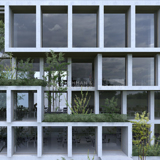Looking to the future, it’s clear that a proactive and adaptable approach will be essential to navigate these changes. According to Savills "Offices in equilibrium: what needs to happen?" report emote working is having a significant impact on corporate property strategies. Major companies are reshaping their office footprints, with some giving up significant spaces and others turning to subleasing – especially in the US and Europe.
Even in Asian markets, where utilisation rates are generally higher, challenges persist in China, where an oversupply has led to rising vacancy rates. The debate over the merits of hybrid working is far from settled – even some large technology companies now insist workers are in the office at least three days a week. But for many industries, the days of the fully on-premises workforce seem to be over for good.
Although office vacancy rates are rising around the world, the trend is not a simple one. We’re also seeing a “flight to prime” in office space that is only likely to accelerate. The share of Grade A take-up across four of the markets monitored – London West End, London City, New York and Singapore – increased from an average of 75% between 2009-2019 to 84% in 2022-2023.
The choice of location is important, and what constitutes a good location may evolve further over the coming years. Employees want offices that are easy to commute to, and may also gravitate towards offices that help them combine work with other reasons to visit city centres, such as shopping, entertainment, healthcare and so on. There is also the potential of a “hub and spoke” model – which combines a central collaborative workspace with a series of smaller satellite offices nearer to where employees live – though this has yet to take off.
The upshot is that if you offer Grade A office space in a good location, you may not recognise the picture of a declining office market. Despite some downsizing and consolidation, we predict average annual Grade A rental growth rates of 2.3% and 2.5% in London City and West End respectively over the next five years and 3.5% in Sydney. Other markets will follow a similar pattern.
Upgrading is a growing necessity
In Grade B office space, however, London City and West End are expected to record a slight decline of 0.7% pa in rents. Although Grade B office space will always be required for start-ups and growing businesses, these occupiers tend to switch up as soon as it is financially viable to do so.
This means lower-quality buildings need to be upgraded if they are to avoid obsolescence. The need for environmentally friendly office space is being driven by occupiers and – in Europe especially – regulators. The abundance of older stock in Europe and the US means that significant refurbishment is often required.
The good news is that this upgrading work is already happening. Although 77% of the office stock across our six monitored markets was built before 2010, 27% of that stock has already been refurbished.
In Paris, the rate of refurbishments as a share of total new development is predicted to increase from 40% in the pre-pandemic period to 48% over the next five years. Globally, the rate of refurbishment is increasing as new-build activity slows. These are positive signs – but refurbishment and retrofitting will not be possible for all lower-grade offices. Retrofitting to the required standard may be prohibitively expensive. Offices in left-behind business locations may never attract the rents they need to justify major investment. As it becomes increasingly difficult to attract tenants to these buildings, repurposing becomes the obvious or only alternative.
What does it take to keep a balanced office market?
Desk sharing, reduced office densities, employment growth and environmental regulation will all have an impact on future office market trends. Over the next decade, we expect demand for office space to decline by no more than 10-15% across most markets globally.
The need to accommodate higher mid-week utilisation rates and to provide more meeting rooms and collaborative spaces to accommodate hybrid working means any reduction of office space per employee cannot be drastic. At the same time, office-based employment is projected to rise by an average of 12.1% across the five cities over the next decade, creating new demand for high-quality office space. Additionally, we expect utilisation rates to recover from the current average (59%) to 72% by 2023.
Our analysis highlights the importance of repurposing in creating a healthy balance of supply and demand over the next 10 years. We estimate between 0.7% and 0.9% of total office stock would need to be repurposed each year to strike this balance. Based on a total office stock across the five cities of 0.98 tn sq ft in 2023, that equates to 8.4m-10.5m sq ft of repurposed space – or three to four Empire State Buildings.We estimate this equates to an average annual repurposing rate of between 0.7% and 0.9% of total office stock. In 2023 values, that equates to 8.4m-10.5m sq ft of an existing stock of 0.98 tn sq ft – or between three and four Empire State buildings – across the five cities. Repurposing in this context means redeveloping office buildings for other uses – such as residential, retail, leisure, health, and education.
However, the level of required repurposing is not consistent across the markets we surveyed. New York will need to repurpose between 1.1% and 1.3% of its office space each year to create equilibrium by 2033. London City is next, at 0.9-1.1%, followed by London West End (0.8-1%), Paris Île de France (0.6-0.8%), Sydney (0.3-0.7%) and Singapore (0.2-0.5%)
Spurce: Offices in equilibrium: what needs to happen?, Savills
.jpg)














